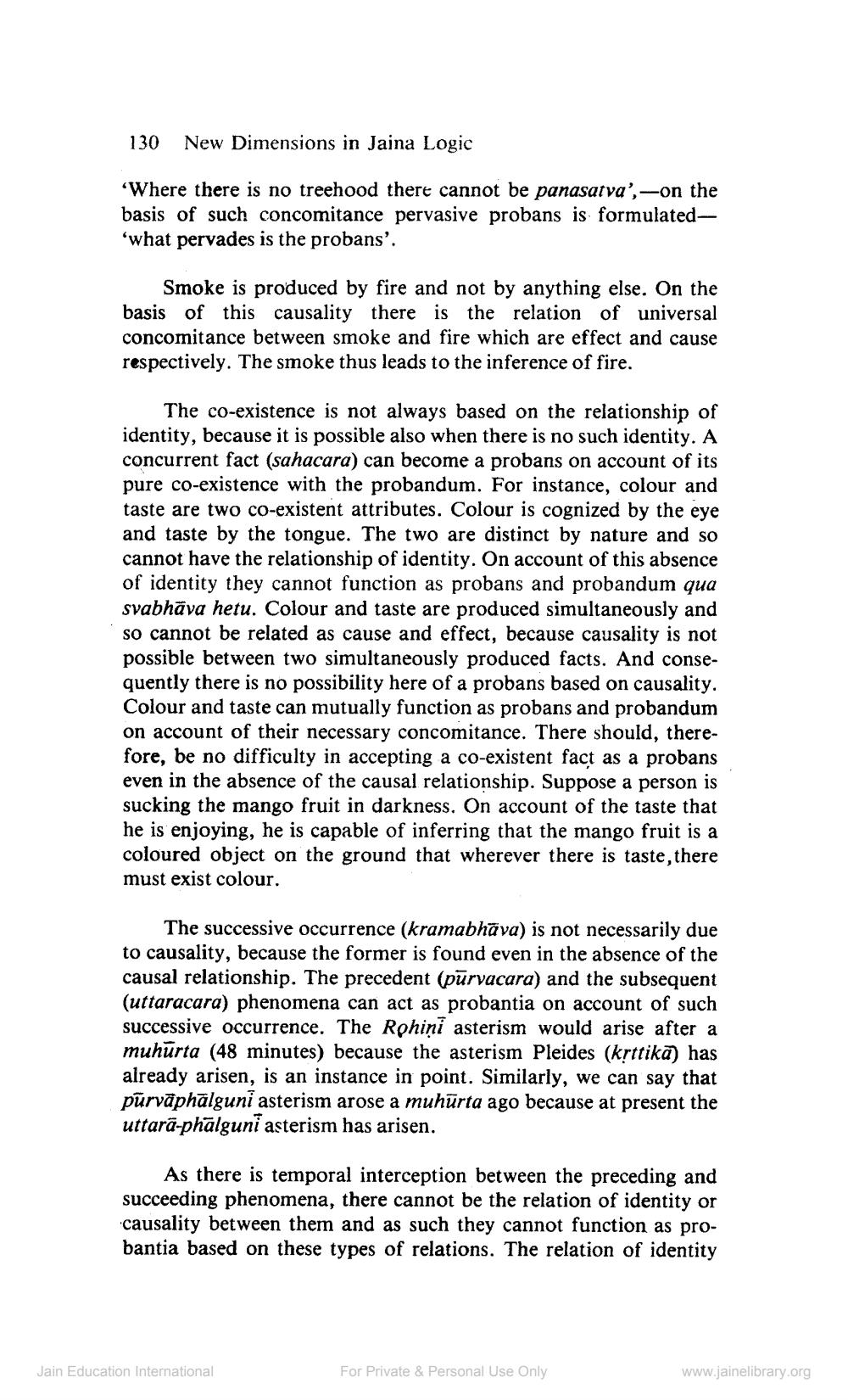________________
130
New Dimensions in Jaina Logic
Where there is no treehood there cannot be panasatva',--on the basis of such concomitance pervasive probans is formulated'what pervades is the probans'.
Smoke is produced by fire and not by anything else. On the basis of this causality there is the relation of universal concomitance between smoke and fire which are effect and cause respectively. The smoke thus leads to the inference of fire.
The co-existence is not always based on the relationship of identity, because it is possible also when there is no such identity. A concurrent fact (sahacara) can become a probans on account of its pure co-existence with the probandum. For instance, colour and taste are two co-existent attributes. Colour is cognized by the eye and taste by the tongue. The two are distinct by nature and so cannot have the relationship of identity. On account of this absence of identity they cannot function as probans and probandum qua svabhāva hetu. Colour and taste are produced simultaneously and so cannot be related as cause and effect, because causality is not possible between two simultaneously produced facts. And consequently there is no possibility here of a probans based on causality. Colour and taste can mutually function as probans and probandum on account of their necessary concomitance. There should, therefore, be no difficulty in accepting a co-existent fact as a probans even in the absence of the causal relationship. Suppose a person is sucking the mango fruit in darkness. On account of the taste that he is enjoying, he is capable of inferring that the mango fruit is a coloured object on the ground that wherever there is taste, there must exist colour.
The successive occurrence (kramabhāva) is not necessarily due to causality, because the former is found even in the absence of the causal relationship. The precedent (pūrvacara) and the subsequent (uttaracara) phenomena can act as probantia on account of such successive occurrence. The Rohini asterism would arise after a muhurta (48 minutes) because the asterism Pleides (krttika) has already arisen, is an instance in point. Similarly, we can say that pūrvāphālguni asterism arose a muhürta ago because at present the uttarā-phālguni asterism has arisen.
As there is temporal interception between the preceding and succeeding phenomena, there cannot be the relation of identity or causality between them and as such they cannot function as probantia based on these types of relations. The relation of identity
Jain Education International
For Private & Personal Use Only
www.jainelibrary.org




